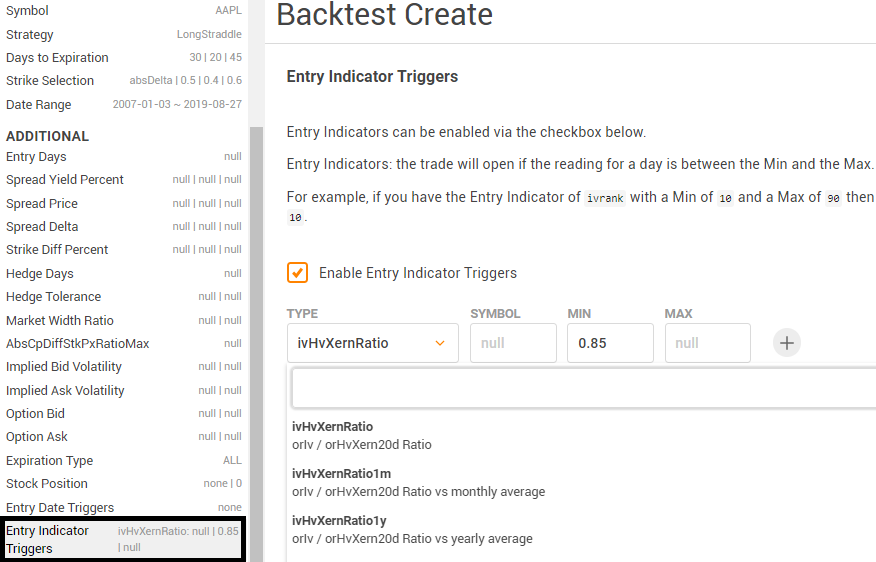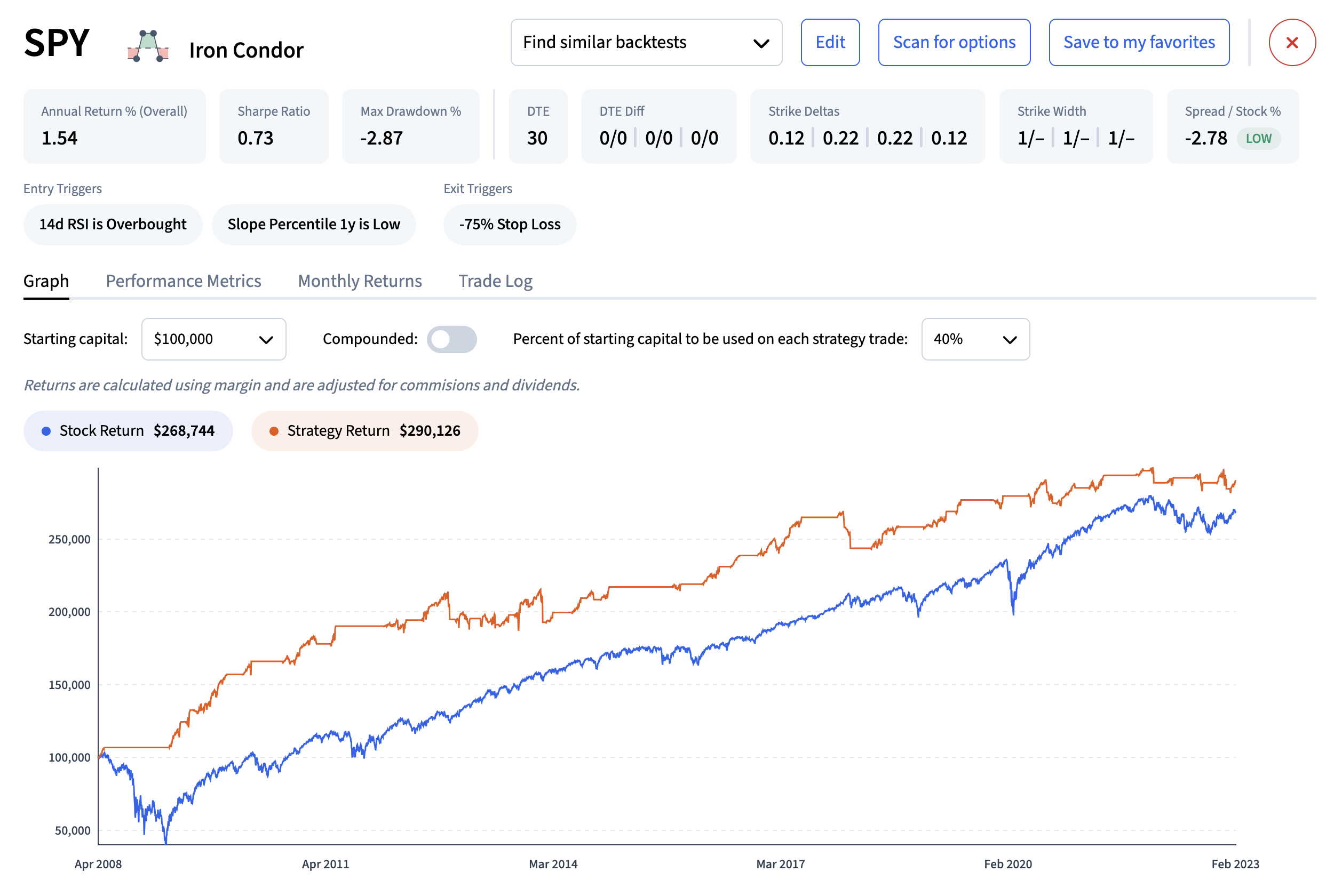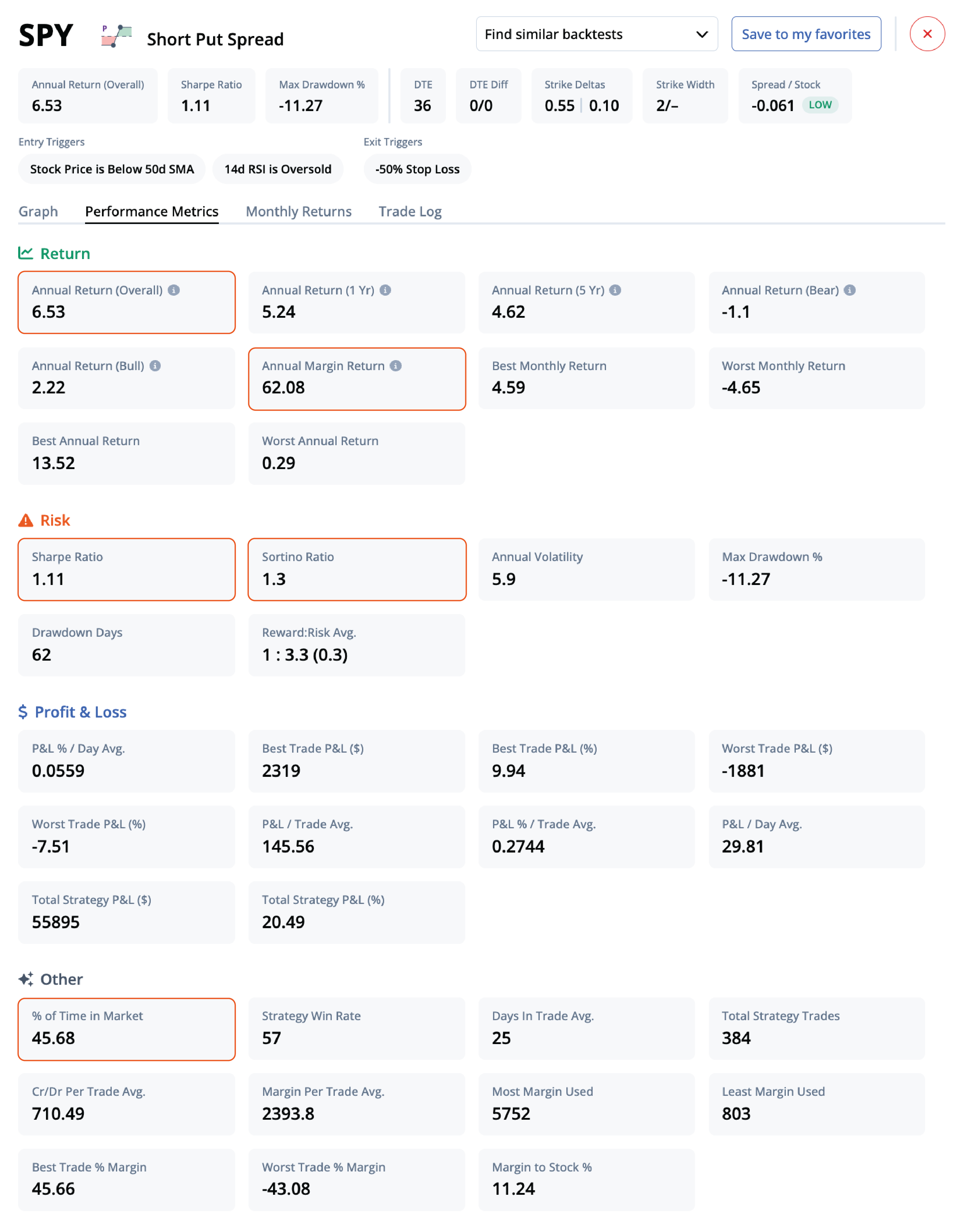Backtesting
Thursday, August 29th 2019
Trading When Implied Is A Specific Amount Over Realized Volatility
ORATS has a data point that measures the implied volatility divided by the historical or realized volatility. This ratio can be used in the backtester.
Summary
ORATS has a data point called ivHvXernRatio, which measures the implied volatility divided by the historical or realized volatility. This ratio can be used in a backtester to only trade when the IV/HV ratio is in a certain range or above or below a certain level. The IV/HV is normally > 1, but currently, with the market so volatile, the IV is < 1 for the average of all symbols, at 0.9722. The one month ratio is 1.0801 and the year average for all symbols is 1.172. A backtest can be run to buy a straddle every time the ivHV ratio is below 0.85, for example.
ORATS has a data point that measures the implied volatility divided by the historical or realized volatility. This ratio can be used in the backtester, for example, to only trade when the IV/HV ratio is in a certain range or above or below a certain level.
We label the ratio ivHvXernRatio because it is the implied volatility at 30 days taking out the earnings effect, divided by the historical volatility for 20 observations (20 observations is about one month so it matches the IV). The ex earnings HV takes out the days around earnings announcement.
Normally, the IV/HV is > 1 since the market normally prices in a risk premium into the implied volatility over historical volatility. Currently, with the market so volatile, the IV is < 1 for the average of all symbols, at 0.9722. The one month ratio is 1.0801 and the year average for all symbols is 1.172.

For AAPL, currently here are the levels:

Below is a graph of the ivHV indicator and below that is the HV20day graph. It looks like the ivHV is low when the HV20day is high, which makes sense.

You can run a backtest to buy a straddle every time the ivHV ratio is below 0.85, for example. Here's what the input looks like:

Try it yourself with a free trial here.
Disclaimer:
The opinions and ideas presented herein are for informational and educational purposes only and should not be construed to represent trading or investment advice tailored to your investment objectives. You should not rely solely on any content herein and we strongly encourage you to discuss any trades or investments with your broker or investment adviser, prior to execution. None of the information contained herein constitutes a recommendation that any particular security, portfolio, transaction, or investment strategy is suitable for any specific person. Option trading and investing involves risk and is not suitable for all investors.
All opinions are based upon information and systems considered reliable, but we do not warrant the completeness or accuracy, and such information should not be relied upon as such. We are under no obligation to update or correct any information herein. All statements and opinions are subject to change without notice.
Past performance is not indicative of future results. We do not, will not and cannot guarantee any specific outcome or profit. All traders and investors must be aware of the real risk of loss in following any strategy or investment discussed herein.
Owners, employees, directors, shareholders, officers, agents or representatives of ORATS may have interests or positions in securities of any company profiled herein. Specifically, such individuals or entities may buy or sell positions, and may or may not follow the information provided herein. Some or all of the positions may have been acquired prior to the publication of such information, and such positions may increase or decrease at any time. Any opinions expressed and/or information are statements of judgment as of the date of publication only.
Day trading, short term trading, options trading, and futures trading are extremely risky undertakings. They generally are not appropriate for someone with limited capital, little or no trading experience, and/ or a low tolerance for risk. Never execute a trade unless you can afford to and are prepared to lose your entire investment. In addition, certain trades may result in a loss greater than your entire investment. Always perform your own due diligence and, as appropriate, make informed decisions with the help of a licensed financial professional.
Commissions, fees and other costs associated with investing or trading may vary from broker to broker. All investors and traders are advised to speak with their stock broker or investment adviser about these costs. Be aware that certain trades that may be profitable for some may not be profitable for others, after taking into account these costs. In certain markets, investors and traders may not always be able to buy or sell a position at the price discussed, and consequently not be able to take advantage of certain trades discussed herein.
Be sure to read the OCCs Characteristics and Risks of Standardized Options to learn more about options trading.
Related Posts



